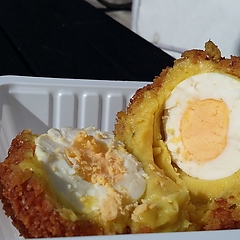Henna art is making temporary decorations on the skin with a colourant out of henna leaves. The leaves are dried and grinded. Rose water and lemon juice, among other things, are added, so that it becomes a paste. The paste is applied with a glass syringe without needle, or a little piping bag. With the henna paste drawings are made on the skin. After absorption and washing the paste away, a red-brownish colour remains on the skin, which is at its most beautiful and dark after two days. IN the course of about two weeks the decoration vanishes. The making of henna decorations is a tradition for and from women. It is used for festive occasions and closely related to the bridal tradition in many countries in North Africa and the Middle East. The first day of the wedding is the henna day. The feet, ankles, hands and wrists of the bride are extensively decorated and the female guests get small decorations too. The symbols that are used are those of fertility, power and happiness, or serve as protection against the evil eye. The patterns and designs differ per country or region and often relate to other crafts, like embroidery and paintwork.
Description
Community
Fatima Oulad Thami is half Dutch, half Moroccan. She is a neqacha, a henna artist. The word stems from ‘decoration, embellishment’. The art of making good henna decorations is in the application of the decorations, without example, freehandedly. With her company Hand of Fatima she gives workshops and demonstrations at festivals, schools and events, but she also does the traditional weddings and ‘loose’ work. Fatima is busy establishing a Dutch overall henna foundation to pass on the henna traditions (not only the decorating but also the stories behind it), to next generations.
History
The use of henna is ages old. Mummies have been found with henna decorations on hair and nails. It seems that this was generally done in the countries where the henna plant grows. The henna night was celebrated throughout the world in places where the henna plant grew, by Jews, Muslims, Sikhs, Hindus, Christians and others. In the past – particularly among the elite – elegant patterns were already in vogue. Common people, who could not pay a professional henna artist, applied simple decorations themselves, with a stick. Because the henna tradition was passed on orally for ages, from woman to woman, not much has been written about the techniques and the customs. The henna tradition in the Netherlands is mostly of Turkish or Moroccan origin. Often a mix of styles is applied, for instance the Indian style with traditional Fessi-designs (from the Moroccan Fès). Many people do not know the symbolism of the various images anymore and the patterns have become fashion-dependent. Flowers, paisley patterns, glitter, crystals and gems are used nowadays. A new phenomena is decorating the belly of a pregnant woman with henna. Sometimes Dutch brides give a henna party too.
Contact
Hand of FatimaReijerweg 83
2983 AN
Ridderkerk
Zuid Holland
Netherlands
Website



